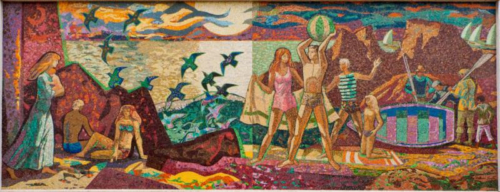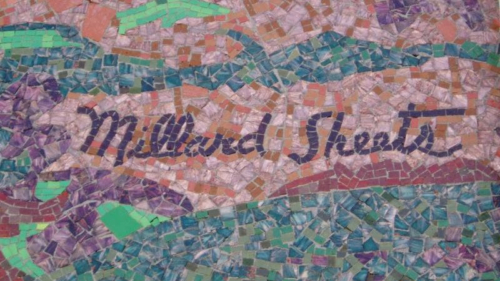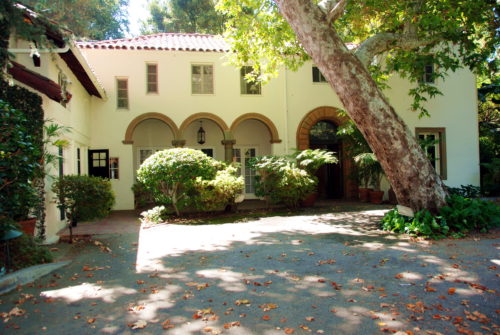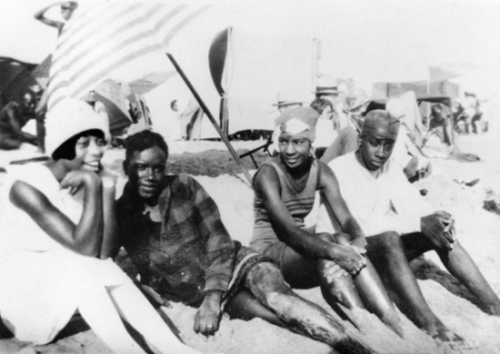See it now before it’s gone! Santa Monica’s iconic Home Savings building at the corner of 26th Street and Wilshire Boulevard will soon lose its remarkable artworks, including the impressive mosaic mural depicting a beach scene. The loss is the result of the City’s settlement of a lawsuit brought against it by the property owner, reversing the landmark designation in 2013 as well as the Santa Monica Conservancy’s appeal to City Council, which once again confirmed the designation in 2017. This result allows the owner to remove the artwork and ultimately demolish the building. The owner’s stated intent is to relocate the artwork and obtain a charitable tax deduction for donating it to a yet undisclosed nonprofit organization.
Designed in 1969 and completed in 1970, the Santa Monica branch is distinguished by its spacious entry plaza, which allows enjoyment of the dazzling mosaic mural. After Home Savings closed in 1998, the building was converted to retail use. The signature exterior mural with its brilliant colors is just one of a group of artworks integrated with the architecture of the building. The Home Savings building exemplifies the innovative collaboration of artist Millard Sheets with financier Howard Ahmanson.
Millard Sheets was a renowned artist, educator and promoter of art in Southern California, who was based in Claremont. The recently published Banking on Beauty by Adam Arenson describes Sheets and the Home Savings projects.

Photo: Peter Leonard

Photo: Larry Underhill
Beginning in the 1950s, Ahmanson commissioned Sheets to create a visual identity for Home Savings that would convey an image of security and financial stability, incorporating decorative artworks with themes linked to the local community. The monumental geometric masses clad in travertine with gold trim, enhanced with mosaics, sculpture and stained glass, became Home Savings’ recognizable identity, attracting customers seeking to build or purchase new homes during the Southland’s post-war building boom.
Sheets, in collaboration with artists at Sheets Design Studio, was given complete artistic freedom in designing these buildings. Millard Sheets’ name is writ large on the mosaic mural, which was executed by artist Nancy Colbath. The entry plaza sculpture of a family playing at the beach was created by Richard Ellis and the dolphin sculpture over the rear door by John Svenson. Inside, a large stained glass design by Susan Hertel is visible under a scrim.
Despite our efforts to dissuade the City from this settlement and persuade the owner to leave the artwork in its original setting, this important landmark will disappear. Visit it now because we understand that the removal of the mosaic mural is imminent.



